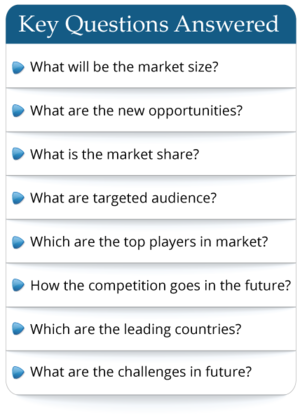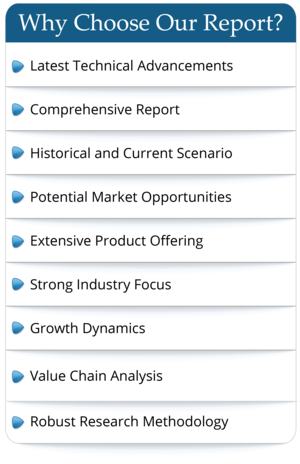Global Master Alloy Market Insights, Forecast to 2029
SKU ID : QYR-25839131 | Publishing Date : 21-Nov-2023 | No. of pages : 129
The global Master Alloy market is projected to grow from US$ 3438.9 million in 2023 to US$ 4178.5 million by 2029, at a Compound Annual Growth Rate (CAGR) of 3.3% during the forecast period.
Aleastur and AMG are the top two players of global Master Alloy industry, with 15% market shares.
Global production of master alloy mainly distribute in Europe, USA and China. The three regions hold about 80% output of master alloy market.
As for the consumption, Asia-Pacific is the largest consumer. The follower is North America, with 21% consumption share.
In terms of production side, this report researches the Master Alloy production, growth rate, market share by manufacturers and by region (region level and country level), from 2018 to 2023, and forecast to 2029.
In terms of consumption side, this report focuses on the sales of Master Alloy by region (region level and country level), by company, by Type and by Application. from 2018 to 2023 and forecast to 2029.
Report Includes:
This report presents an overview of global market for Master Alloy, capacity, output, revenue and price. Analyses of the global market trends, with historic market revenue/sales data for 2018 - 2022, estimates for 2023, and projections of CAGR through 2029.
This report researches the key producers of Master Alloy, also provides the consumption of main regions and countries. Highlights of the upcoming market potential for Master Alloy, and key regions/countries of focus to forecast this market into various segments and sub-segments. Country specific data and market value analysis for the U.S., Canada, Mexico, Brazil, China, Japan, South Korea, Southeast Asia, India, Germany, the U.K., Italy, Middle East, Africa, and Other Countries.
This report focuses on the Master Alloy sales, revenue, market share and industry ranking of main manufacturers, data from 2018 to 2023. Identification of the major stakeholders in the global Master Alloy market, and analysis of their competitive landscape and market positioning based on recent developments and segmental revenues. This report will help stakeholders to understand the competitive landscape and gain more insights and position their businesses and market strategies in a better way.
This report analyzes the segments data by Type and by Application, sales, revenue, and price, from 2018 to 2029. Evaluation and forecast the market size for Master Alloy sales, projected growth trends, production technology, application and end-user industry.
Descriptive company profiles of the major global players, including AMG, KBM Affilips, Aleastur, Reading Alloys, SLM, Minex Metallurgical, Avon Metals, Zimalco and Bamco, etc.
By Company
AMG
KBM Affilips
Aleastur
Reading Alloys
SLM
Minex Metallurgical
Avon Metals
Zimalco
Bamco
Yamato Metal
CERAFLUX
ACME
Belmont Metals
Milward
Metallurgical Products Company
Silicor Materials
IBC Advanced
Hebei Sitong New Metal Material
Shenzhen Sunxing Light Alloy Materials
XZ Huasheng
Nanjing Yunhai Special Metals
Sichuan Lande Industry
Xuzhou Huatian Metal Flux
BHN Special Material
ZS Advanced Materials
Hunan Jinlianxing Special Materials
Aida Alloys
Jiangxi Hongke Special Alloys
Huazhong Aluminium
Segment by Type
Aluminium-based Master Alloy
Copper-based Master Alloy
Others
Segment by Application
Transportation
Building and Construction
Package
Energy
Others
Production by Region
North America
Europe
China
Japan
Sales by Region
US & Canada
U.S.
Canada
China
Asia (excluding China)
Japan
South Korea
China Taiwan
Southeast Asia
India
Europe
Germany
France
U.K.
Italy
Russia
Middle East, Africa, Latin America
Brazil
Mexico
Turkey
Israel
GCC Countries
Chapter Outline
Chapter 1: Introduces the report scope of the report, executive summary of different market segments (by Type and by Application, etc.), including the market size of each market segment, future development potential, and so on. It offers a high-level view of the current state of the market and its likely evolution in the short to mid-term, and long term.
Chapter 2: Master Alloy production/output of global and key producers (regions/countries). It provides a quantitative analysis of the production and development potential of each producer in the next six years.
Chapter 3: Sales (consumption), revenue of Master Alloy in global, regional level and country level. It provides a quantitative analysis of the market size and development potential of each region and its main countries and introduces the market development, future development prospects, market space, and capacity of each country in the world.
Chapter 4: Detailed analysis of Master Alloy manufacturers competitive landscape, price, sales, revenue, market share and industry ranking, latest development plan, merger, and acquisition information, etc.
Chapter 5: Provides the analysis of various market segments by type, covering the sales, revenue, average price, and development potential of each market segment, to help readers find the blue ocean market in different market segments.
Chapter 6: Provides the analysis of various market segments by application, covering the sales, revenue, average price, and development potential of each market segment, to help readers find the blue ocean market in different downstream markets.
Chapter 7: North America (US & Canada) by type, by application and by country, sales and revenue for each segment.
Chapter 8: Europe by type, by application and by country, sales and revenue for each segment.
Chapter 9: China by type and by application sales and revenue for each segment.
Chapter 10: Asia (excluding China) by type, by application and by region, sales and revenue for each segment.
Chapter 11: Middle East, Africa, Latin America by type, by application and by country, sales and revenue for each segment.
Chapter 12: Provides profiles of key manufacturers, introducing the basic situation of the main companies in the market in detail, including product descriptions and specifications, Master Alloy sales, revenue, price, gross margin, and recent development, etc.
Chapter 13: Analysis of industrial chain, sales channel, key raw materials, distributors and customers.
Chapter 14: Introduces the market dynamics, latest developments of the market, the driving factors and restrictive factors of the market, the challenges and risks faced by manufacturers in the industry, and the analysis of relevant policies in the industry.
Chapter 15: The main points and conclusions of the report.
Frequently Asked Questions
- By product type
- By End User/Applications
- By Technology
- By Region

 Pre-order Enquiry
Pre-order Enquiry Request Free Sample
Request Free Sample


 Request Sample
Request Sample Request Discount
Request Discount










